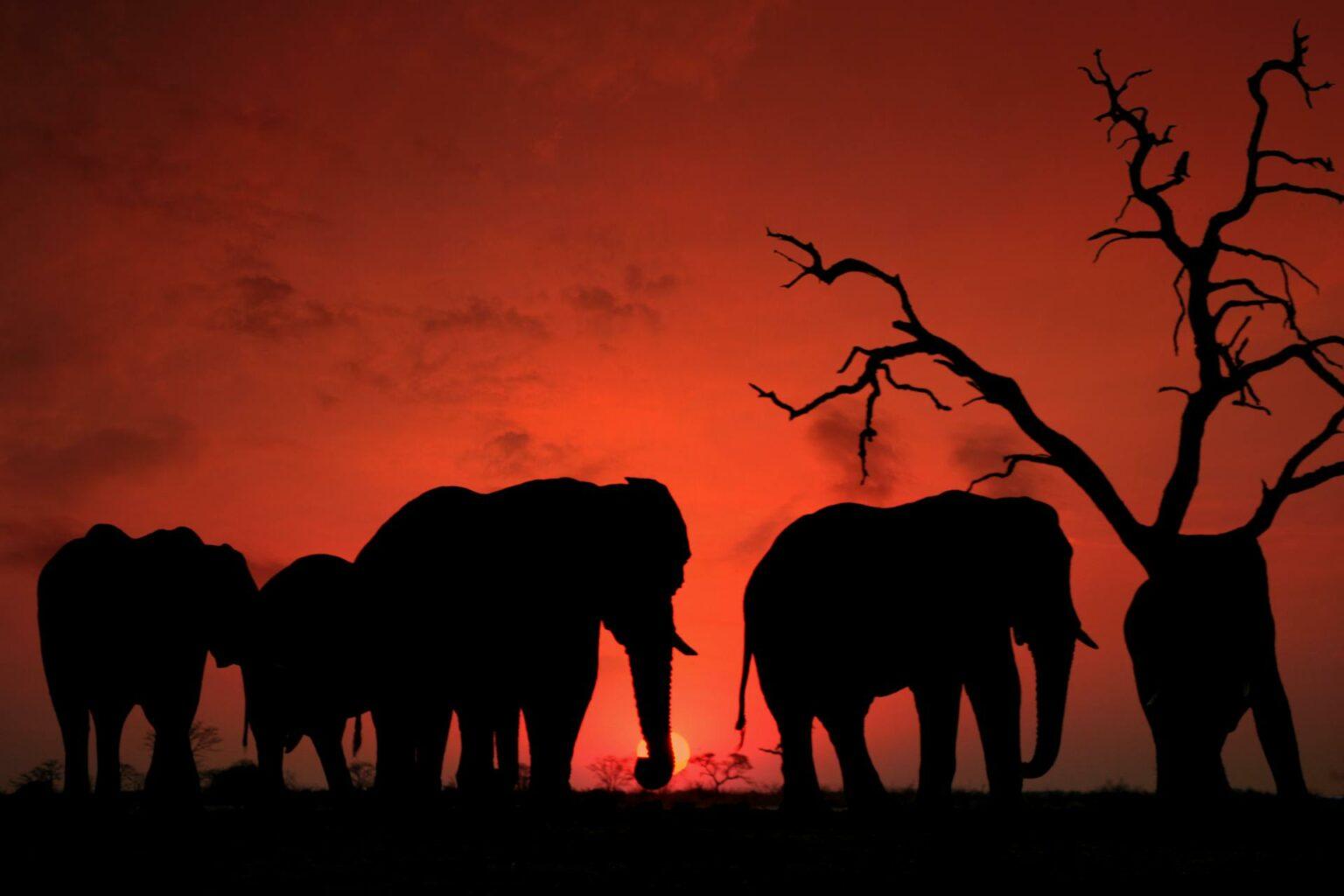When it comes to elephant hunting, it’s a hunting adventure like no other! And, make no mistake, size does count! It’s all about the length, girth, and weight and the memories of the dream game hunting safari.
Historic big game hunters such as Frederick Courtney Selous, Billy Judd, John Boyes, and Arthur Neumann were famous for successfully harvesting hundreds of elephants, Africa’s largest mammals. Decades ago, achieving an elephant hunting trophy of over 120 pounds was achievable. An elephant bull, carrying heavy and thick ivory, is considered the most prized African big game hunting trophy.
It is speculated that the fascination with African big game dates to as early as 1848 when Roualeyn Gordon-Cumming returned to Britain with 30 tons of treasure. A few years later, Cumming opened his collection to the public. It consisted of a variety of curios, memorabilia, and, of course, African big game trophies. Cumming’s travelogue was widely read, transforming the former soldier into an iconic figure, described as the “African Sportsman.” This is believed to be the period where the thrill of big game hunting in Africa all started.
[DYNAMIC-BLOGTABLEOFCONTENT]
Namibian Elephant Population Statistics
The proceeds received from elephant hunting in Namibia are a large contributor to wildlife and conservation programs. Elephant population numbers are healthy as per CITES (The Convention on International Trade in Endangered Species of Wild Fauna and Flaura) at over 23,000 and since 1995 numbers have been increasing at a rate of over 5%.
Community Contributions and Proceeds as a Result of Elephant Hunting
Namibia has allocated approximately 20% of its land areas and designated the areas as communal conservancies. While a portion of the hunting rights are retained by the communities, a portion is “sold” to Namibian outfitters, who in turn promote big game hunting safaris.
For outfitters to retain their elephant hunting concessions, additional commitments are required to uplift local communities, which include the maintenance of infrastructure such as roads.
- Community upliftment projects such as building schools, supplying solar power, and water supply projects.
- Meat generated during the hunting safari is donated to local communities.
The aim of this initiative and designation of land areas is to develop opportunities for previously disadvantaged and impoverished local members of the community to have a reason to preserve wildlife. Game hunting safaris are thus a tool to keep the antelope and dangerous game species in balance, while local communities receive direct benefits.
Elephant Hunting in Namibia: The Famous Caprivi Strip
The Caprivi Strip - Wetland Area
The Caprivi Strip, which in later years has been renamed the Zambezi region, is Namibia’s only area that receives high rainfall. These summer floodwaters turn the areas into lush floodplains supporting enormous expanses of green grass that elephants simply can’t resist. This expanse of land is situated in the North Eastern area of Namibia and is surrounded by Angola, Botswana, and Zambia.
Botswana has the highest population of free-range elephants in Africa and these giants freely traverse the borders, ensuring a variety of huntable elephant Bulls.
River channels are navigated either on foot or by using local wooden canoes named mokoros. Elephants can easily be spotted in the long grass during the drier winter months.
The Caprivi Strip can be accessed either by flying into Kasane International Airport and crossing over from Botswana, or by taking a domestic flight from Windhoek to Katima.
The Caprivi Strip is also known for African hunts focused on Cape buffalo, hippo, and, of course, the giant Nile crocodile.
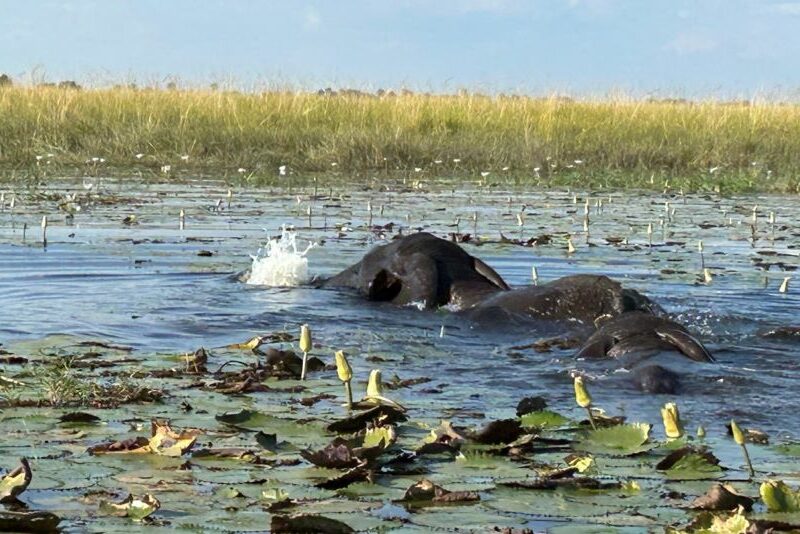
Bushmanland, Namibia
Bushmanland is one of the largest conservatories in Namibia and shares its Eastern border with Botswana. The terrain is Kalahari sands, flat landscapes, and woodlands boasting ancient Camel Thorn (Acacia erioloba) trees.
Elephant hunting in Bushmanland is free-range and often discount hunts for non-exportable elephants are available. Elephant hunting in this area is well supported by the local communities.
This truly wild area is also well known for leopard hunting and produces top trophy cats.
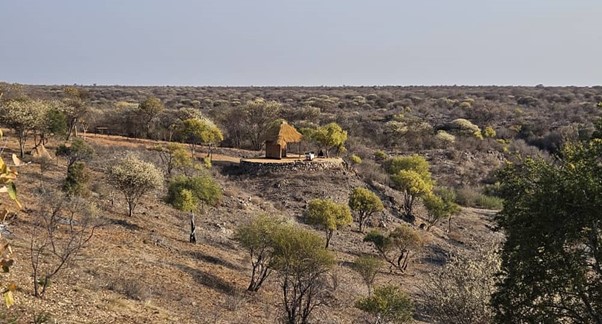
The below illustration shows the geographical locations of two of the top elephant hunting in Namibia destinations. The vast size of the Namib Desert and the world-famous Etosha Game Reserve are visible showing the traveling distance from Namibia’s capital Windhoek. If time allows, it would be suggested that the hunting safari be extended to visit the towns of Swakopmund and Walvis Bay.
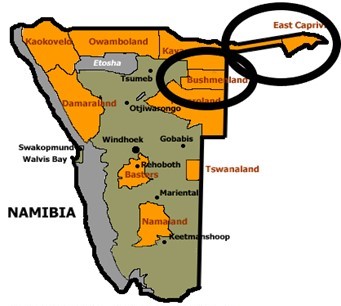
Elephant Hunting Lodges in Namibia: Caprivi Strip vs. Bushmanland
One thing elephants require to not only survive but thrive in Namibia is space, of which there is plenty available in this premier big game hunting destination. Hunting safaris for these sought-after trophies can be for a period of 14 to 21 days, which is a lengthy period to be away from home, not even considering international travel time.
As the days are filled with tracking, walking, and hard hunting, the importance of a comfortable hunting lodge cannot be underestimated. In areas such as the Caprivi and Bushmanland, there are no fundamental differences, except the view of the landscape.
Hunting lodges in Namibia are constructed using tents, and indigenous raw materials with a few luxury items such as chillers, stoves, beds, and bar accessories being sourced and transported from the larger cities.
These lodges are comfortable, clean, and powered by solar or generators.
Washing is done daily, and it would be advisable to check with the outfitter with regards to cell phone and data connectivity. As much as we like to “switch off from reality,” as the elephant hunting safaris are often so long, contact with the outside world is often a prerequisite.
Hunting lodges in Namibia employ top quality chefs and the cuisine is of a very high standard. Your outfitter before commencement of the hunting safari will check if there are any specific dietary requirements and advise as to the selection of soft drinks and alcoholic beverages that can be made available.
As residents understand the financial contributions and benefits generated by African hunts, hunting lodges in Namibia have available suitably qualified secondary staff such as trackers, skinners, maintenance, and cleaning staff who remain employed for lengthy periods, ensuring a strong base of skill sets.
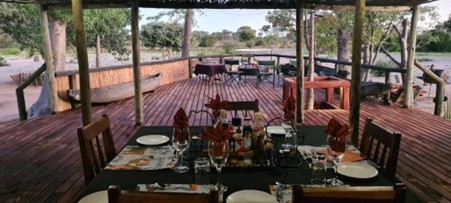
Why do Chobe Elephants have smaller Tusks than Elephants found in Bushmanland?
When elephant hunting in Namibia, we previously mentioned how size matters. Elephants that are hunted in the Caprivi Strip, migrate from the Chobe areas within and surrounding Botswana. While Chobe elephants are Kalahari elephants, the largest worldwide, they have distinct size differences (tusks) to elephants found in other areas.
Botswana has a variety of different ecosystems, from green plains and savannahs to woodland areas. Due to the lower content of the calcium in the soil, Chobe elephants have smaller tusks which are also more brittle. While this reduces the risk of poaching, this has a negative impact when choosing the ideal elephant hunting safari.
When it comes to trophy elephant hunting, Bushmanland is preferred to the Caprivi Strip Area. Elephant tusks in Chobe can average 35 to 40 pounds, while Bushmanland can produce trophy elephants of over 60 pounds.
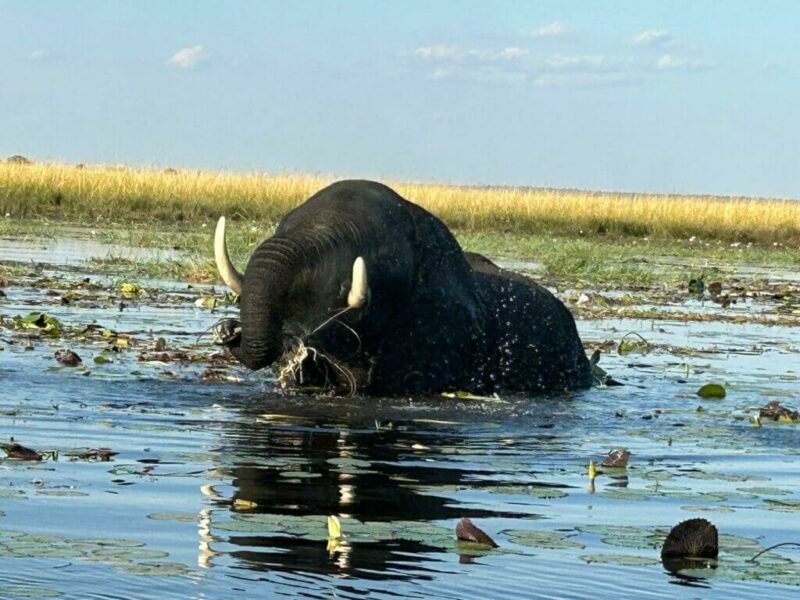
How much does a Trophy Elephant Hunting Safari in Namibia cost?
In Bushmanland, an elephant hunting safari of 21 days will cost between US$50,000 and US$65,000.
In the Caprivi Strip, based on the average size of the trophy, the game hunting safari will cost between US$28,000 and US$32,000 and can be done over 14 days.
In certain instances, depending on the remaining quota, discount hunts for elephants do become available. However, it is to be noted that in these instances, these big game African hunts are done at short notice and the hunter needs to be able to “pack and go.”
Discounted Hunting Safaris when Hunting in Namibia
- African big game hunts do not come “cheap,” no matter the destination. We all dream of game hunting large African Elephants, but often these hunting safaris are not within the financial grasp and reach of the hunter.
- The good news is that when it comes to elephant hunting in Namibia, there are often hunts available at a lower cost. This cost is materially affected by the trophy elephant not being exportable, or the hunting safari being geared toward hunting tuskless elephants.
- Taxidermists today are skilled enough that should they be supplied with sufficient images and measurements, that a replica of the elephant can be rebuilt and shipped.
- A hunting safari for elephant in Namibia for a non-exportable African elephant can listed as one of the discount hunts available and can cost the hunter as little as US $20,000. The safari hunting cost is reduced as the duration of the hunt is normally over 10 days, thus reducing the cost by the daily hunting rate.
- An elephant hunt in either the Caprivi Strip or Bushmanland can be reduced even further if a tuskless elephant is the target and the hunting safari price estimate can be as low as US $15,000.
Why do some African Elephants not have Tusks?
Tuskless elephants normally apply to females, and it is believed that it is associated with the X-Chromosome is hereditary and is formed by two tooth genes. In male elephants, the mutation is lethal. Elephant hunting for tuskless elephants is thus encouraged to “take out” those female elephants affected by the genes.
Can I export my Trophy Elephant?
Yes, under CITES, trophy elephants hunted in Namibia are fully exportable.
Is the Method of Elephant Hunting in Namibia different in the Caprivi Strip vs. Bushmanland?
There is no difference in the method of elephant hunting in these two areas of Namibia. Both hunting safaris will be on a walk-and-stalk basis. In the Caprivi area, it may be slightly easier to spot the trophy elephant due to the vegetation and line of sight.
A typical day of elephant hunting will commence at sunrise, after a tasty breakfast. The objective will be to find and follow fresh tracks and walk down the elephant. The hunter will need to be in good physical as many miles can be covered in a day. In the evening, the hunting safari will head back to base camp and strategize as to the following day’s plan of action.
Rifles, Ammunition and Shot Placement
There is not any difference as to rifle requirements tied to any geographical area within Namibia, preference of choice will lay with the hunter. The minimum requirement is a .375 will a 300-grain bullet, either a solid or monolithic. As elephant hunting is “up close and personal,” a larger caliber rifle such as a .416 Rigby, or .458 Lott, or a traditional double rifle, which is synonymous with African big game, such as a 500 Nitro Express is also a great choice.
Shot placement when elephant hunting is critical. If a brain/headshot is a consideration, be sure to use bullets that can penetrate the skull.
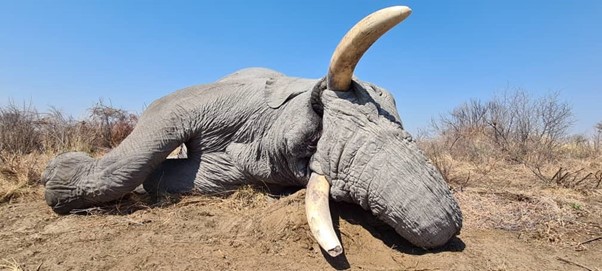
An African big game hunting safari for the most prized trophy elephant is all about personal choice. Hunting elephants in the Caprivi Strip will have challenges mutually exclusive to that of hunting elephants in the Bushmanland area. Make the choice that is right for you, and right for your pocket.
Additional Recommendation when Hunting in Namibia
Trophy hunting in Namibia produces world-class animals. Consider amending the hunting safari package to include Cape buffalo hunting or add some endemic antelope such as the tiny ten Damara Dik-Dik, black-faced impala, or a Hartmann’s zebra.
Big game hunting in Namibia is the first choice of the international hunting community. For further information about Namibia hunting, see “Namibia Trophy Hunting, Big Five, Antelope, and Specialty Game”, or read more about African big game hunting in a blog entitled “Big Game Hunting in Namibia.”
Author: PC van Wyk
